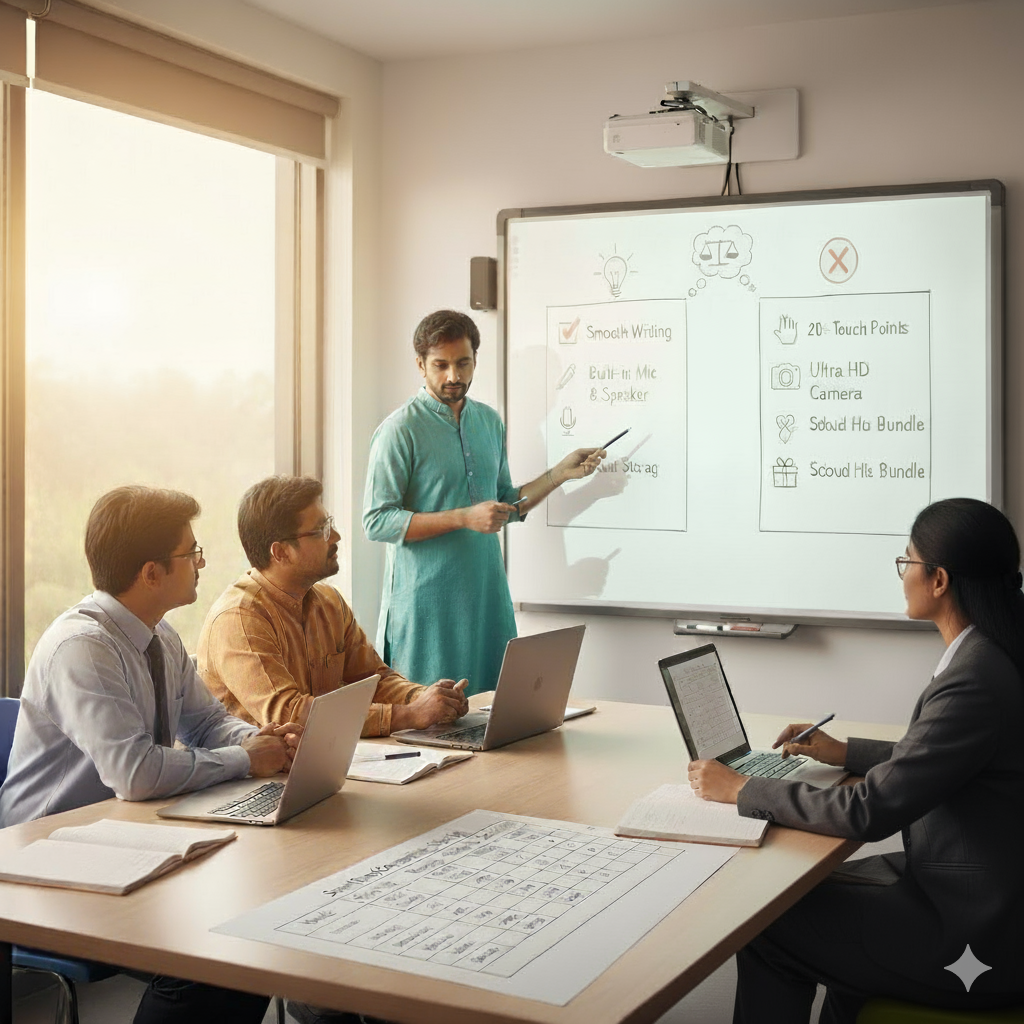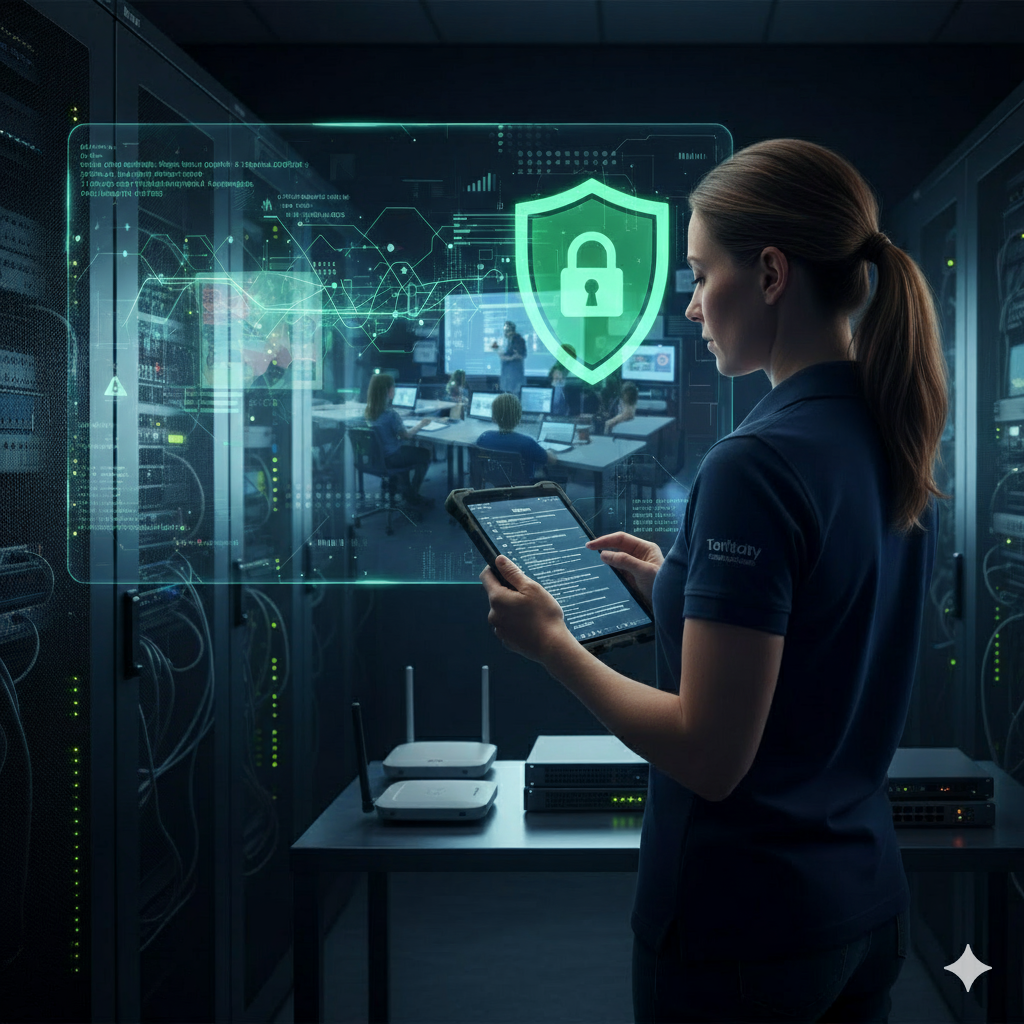Features of a Smart Classroom That Support Differently‑Abled Students: A Comparative Checklist

As India’s education sector undergoes a significant transformation, inclusivity has evolved from a mere trend into a critical priority. It is a mandate and a moral imperative. With frameworks like the National Education Policy (NEP) 2020 emphasizing equitable access to quality education, schools and universities are moving beyond building ramps to building digital bridges. However, true inclusion requires more than just intent. It requires the right infrastructure.
When we talk about "differently-abled students," we are referring to a diverse spectrum of learners. This includes students with mobility impairments, visual or hearing challenges, speech difficulties, and neurodiverse learners (such as those with ADHD, autism, or dyslexia). For decision-makers in schools, colleges, and training centers, the challenge lies in selecting smart classroom equipment that doesn't just digitize the room but democratizes the learning experience.
This blog serves as a comprehensive guide and comparative checklist. We will breakdown the essential features of a smart classroom designed for inclusivity, helping you evaluate vendors and ensuring your investment creates a learning environment where every student, regardless of ability, can thrive.
Inclusive Education Framework & Feature Thinking
Before diving into hardware specs, we must understand the pedagogy behind inclusive technology. The gold standard here is Universal Design for Learning (UDL).
Universal Design for Learning (UDL) & Its Relevance
UDL is a framework to improve and optimize teaching and learning for all people based on scientific insights into how humans learn. It relies on three principles:
- Multiple Means of Representation: Giving learners various ways of acquiring information and knowledge (e.g., audio, video, text).
- Multiple Means of Expression: Providing alternatives for demonstrating what they know.
- Multiple Means of Engagement: Tapping into learners' interests and offering appropriate challenges.
Translation to Smart Classrooms:
A standard whiteboard fails UDL because it is static. A feature of a smart classroom setup must be dynamic. It needs to turn text into speech for the visually impaired (Representation), allow touch or gesture inputs for those with motor difficulties (Expression), and use immersive visuals to capture the attention of neuro-diverse students (Engagement).
Assistive Technology and Integration
Assistive technology in a smart classroom context refers to the seamless integration of hardware and software that bypasses a student's specific challenge. It is about the interactive display having built-in compatibility with screen readers, magnification tools, and hearing loops.
Categorizing Features by Disability-Type
To make this checklist actionable, we must look at features of a smart classroom through the lens of specific needs:
- Mobility Impairments: Focus on physical access, remote inputs, and height adjustability.
- Visual Impairments: Focus on screen size, contrast, glare reduction, and audio descriptions.
- Hearing/Speech Impairments: Focus on audio clarity, volume distribution, and transcription.
- Neuro-diversity: Focus on engagement, recording capabilities (for repetition), and sensory-friendly interfaces.
Feature Checklist: A Comparison
When evaluating vendors, use this checklist to distinguish between a basic digital upgrade and a truly inclusive solution.
1. Physical Access & Infrastructure Features of a Smart Classroom
2. Audio-Visual & Interaction Features of a Smart Classroom
3. Software & Learning Management Features of a Smart Classroom
Checklist of Questions to Ask Vendors
When speaking to a provider, ask these specific questions to gauge their inclusivity:
- My students with low vision need a 100+ inch display. Can your standard flat panel provide that without costing a fortune?
- Does your system rely on direct light (backlit) or reflected light? We are concerned about sensory overload.
- How easy is it for a student with ADHD to watch a replay of the specific class segment they missed?
- Is the computing unit integrated, or do I need to buy a separate PC to run advanced accessibility software?
Feature-Fit Evaluation Matrix
Implementation Roadmap & Best Practices
Transforming a classroom into an inclusive space is a journey. Here is a roadmap for implementing the right features of a smart classroom.
Phase 1: Audit of Needs
Survey your special education department. Do you have more students with visual impairments or learning disabilities like Dyslexia? If the latter, prioritize systems like Roombr that offer robust recording and "visit and revisit" capabilities.
Phase 2: Feature-Selection
Choose hardware that simplifies the ecosystem. A patchwork of devices (separate mics, separate cameras, separate PCs) creates failure points. Roombr integrates the computing unit, dual cameras, mics, and speakers into one device, reducing technical friction for teachers.
Phase 3: Pilot Deployment
Install the solution in a "resource room" first. Use Roombr’s "Plug-and-Play" functionality to set up quickly. Allow students with different abilities to test the interactive display and provide feedback on the height, brightness and audio clarity.
Phase 4: Full Roll-Out & Training
Train teachers not just on "how to turn it on," but on how to use the features of a smart classroom for inclusion. Show them how to use the Roombr App to share notes with students who struggle with handwriting, and how to use the Zoom features on the 200-inch screen to highlight text for the class.
Phase 5: Review & Upgrade
Utilize the analytics. Are neurodiverse students accessing the recorded sessions? Is participation improving? Roombr’s certifications (ISO and BIS) ensure that you are using a tested, proven, and safe device for your long-term strategy.
Quick Recap
- Follow UDL Principles: Ensure your tech offers multiple ways for students to learn (visual/audio) and interact (touch/voice).
- Maximize Screen Size: Standard displays are often too small. Aim for 100+ inches to support students with visual impairments.
- Prioritize Sensory Health: Choose reflected light (projection) over direct backlit screens to reduce eye strain and sensory overload.
- Enable Repetition: Look for built-in session recording so students with processing delays can revisit lessons anytime.
- Ensure Physical Access: The system must support remote inputs (air mouse/keyboards) and flexible viewing heights for wheelchair users.
- Simplify Integration: Select all-in-one computing units that easily run third-party assistive software without lagging.
Evaluate the Future of Inclusive Education with Roombr’s Smart Classroom Features
Is your current classroom infrastructure truly ready for every learner? Standard screens often limit visibility and accessibility. Roombr transforms your walls into massive 200-inch interactive workspaces, offering sensory-friendly visuals and built-in recording tools that specifically empower students with diverse needs.
Compare the difference yourself. Schedule a live demonstration today to see how our certified, patented technology can bridge the learning gap in your institution.
Foziya Abuwala
Share
Step Into the future of
Education with Roombr

















